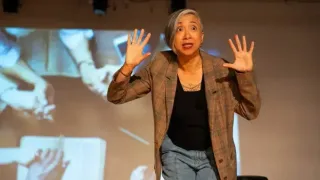
3 hours ago
Austin Butler’s Unique Prep for ‘Caught Stealing’: Studying Baseball Players’ Butts
READ TIME: 11 MIN.
Austin Butler, acclaimed for his transformative performances, has once again drawn attention with his preparation for the role of Hank Thompson in Darren Aronofsky’s upcoming crime comedy, "Caught Stealing". Playing a washed-up ex-baseball player navigating the criminal underworld of 1990s New York, Butler’s physical transformation was rooted in an unexpected directive: study the glutes of professional baseball players to embody the athletic authenticity required for the character.
Speaking to Men’s Health, Butler explained that Aronofsky sent him images of baseball players specifically highlighting their rear ends, emphasizing the need for “thick” glutes characteristic of athletes who spent years on the field. “I actually have a whole section of just baseball players’ asses that would send me,” Butler shared. “He was like, ‘Look how thick they are!’”. This focus on the body’s posterior was not simply for aesthetics but to help Butler inhabit the role with a level of realism that goes beyond the usual Hollywood transformation.
Butler also underwent intense physical training with Beth Lewis, a renowned trainer known for working with other actors in physically demanding roles, ensuring his physique authentically reflected a seasoned athlete’s build.
Butler’s commitment extended beyond observation—he reportedly gained 35 pounds to play the alcoholic former baseball player, further blurring the line between character and actor. For LGBTQ+ audiences, this process offers a unique opportunity to reflect on body image, masculinity, and the way physicality intersects with identity in media. The specificity of focusing on the glutes—a part of the body often coded with sexual and gendered connotations—challenges traditional Hollywood norms that typically prioritize chiseled abs or biceps as markers of athleticism and desirability.
This move resonates with queer viewers who have long critiqued the limited and often heteronormative standards of male beauty portrayed on screen. By foregrounding a less conventional aspect of the male physique, Butler and Aronofsky invite audiences to reconsider what it means for a body to signify strength, vulnerability, and authenticity. The glute-focused transformation also opens up discussions around the gaze in cinema: who gets to look, and what is shown, subverting norms that have historically objectified women while placing men’s bodies as passive or utilitarian.
The open discussion of Butler’s preparation marks a shift in Hollywood’s willingness to engage with male bodies in ways that aren’t strictly about dominance or aggression. Instead, the focus on athletic glutes hints at a softer, more nuanced masculinity that is both queer-inclusive and affirming. As LGBTQ+ activists and commentators have noted, visibility of varied male bodies—and the stories they represent—can have a profound effect on audiences, particularly queer men and transgender people who may see themselves reflected in these more complex portrayals.
The collaboration between Butler and Aronofsky also highlights the importance of intentionality in filmmaking, where even the most minor physical details are considered crucial to character development. This level of detail not only enriches the performance but also signifies respect for the experiences of athletes—many of whom, including queer and transgender sportspeople, have struggled for recognition and representation both on and off the field.
Reaction across LGBTQ+ social media and news platforms has been largely positive, with many commentators praising Butler’s transparency and the film’s willingness to confront body norms in a playful yet meaningful way. The story has sparked broader conversations about how the physicality of actors can be leveraged to challenge stereotypes and expand the range of stories told in mainstream cinema. Some activists have noted that the focus on glutes—often overlooked in discussions of male beauty—reflects a more holistic appreciation of diverse bodies and athleticism, encouraging audiences to rethink traditional standards.
Moreover, the visibility of Butler’s preparation process has prompted discussions about accessibility and body positivity in the entertainment industry. LGBTQ+ advocates continue to call for more inclusive casting and storytelling that celebrates all bodies, identities, and lived experiences.
As "Caught Stealing" approaches its release, the conversation around Butler’s research method serves as a reminder that authenticity in storytelling can be found in the most unexpected places. For LGBTQ+ viewers and allies, it’s another step toward a more inclusive and representative Hollywood.






